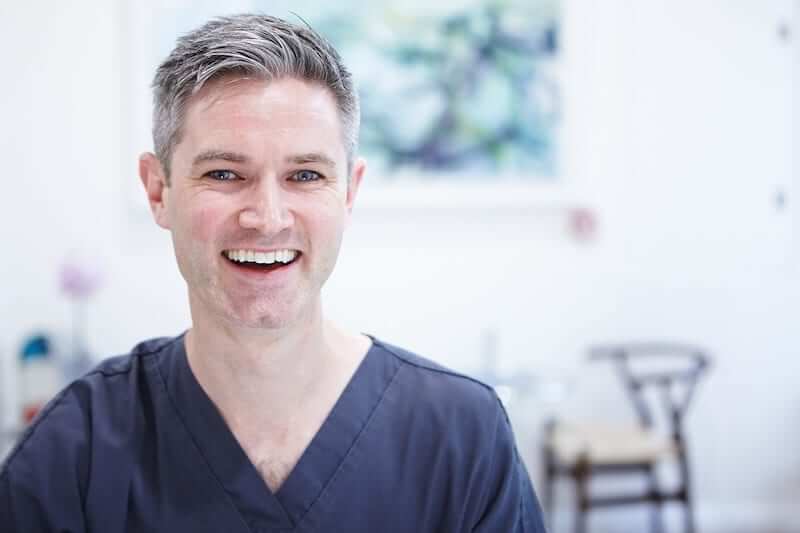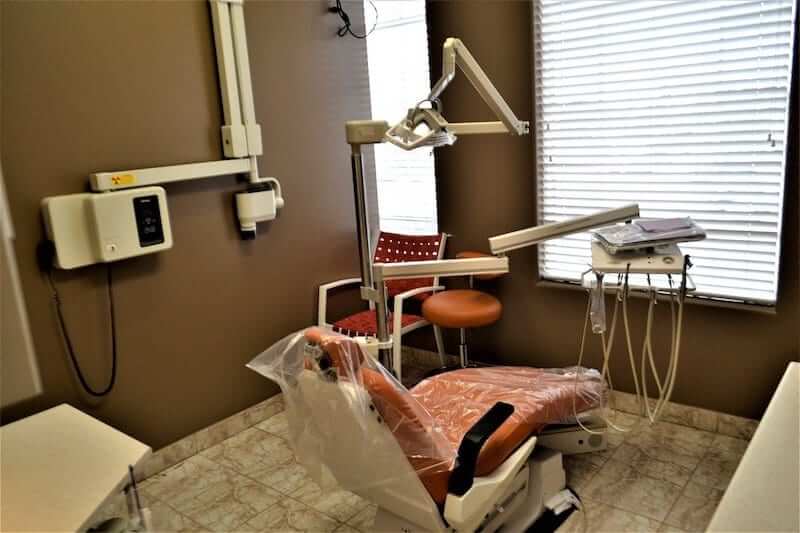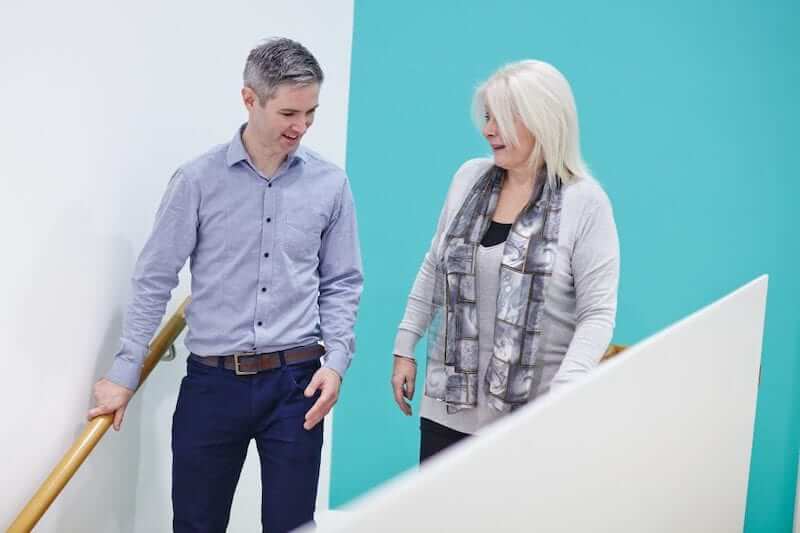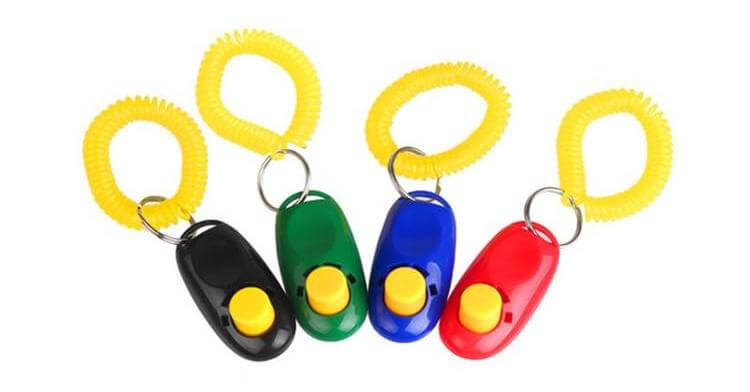About the author: Niall Neeson BDS (Hons) P. GRAD. DIP. CON. SED. is the clinical director at Boyne Dental and Implant Clinic in Navan and has a special interest in helping people who avoid (or really dislike) going to the dentist. The original article appeared in Scottish Dental magazine and Ireland’s Dental magazine. Article reproduced with permission from the author and the publisher.

How to fight ‘fight or flight’
How does it make you feel when your receptionist informs you that “this next patient is REALLY nervous”?
Dental anxiety is something we all encounter on a daily basis. It won’t surprise you to hear that it can cause significant stress for both patients and dentists 1.
In Ireland, it has been shown to cause problems for up to one in five adults 2. Remember, this represents a big chunk of our patient base. At times it can seem inconvenient to take extra time for nervous patients, but there are huge benefits in managing dental fear effectively – for patients and indeed for us.
There are many factors that can contribute to dental anxiety including genetic or personality factors, mental health and parental influence 3, and it has been shown to be a lot more complicated than the typical bad experience from ‘The Butcher’.

In spite of this, when anxious or phobic patients are asked, they do often speak about a particularly memorable experience – often painted in colourful language vividly describing the sights, sounds, smells and sensations. Sound familiar?
Realistically, despite our best efforts, we have probably all contributed to such experiences in the past. But what can we do to reduce the chances of contributing to dental anxiety in the future?
Well, while ‘fear’ is a normal physiological response to a real or imminent danger, anxiety is different; anxiety is a response to a ‘perceived’ threat at a time when there is no objective source of danger. Anxiety will activate the sympathetic nervous system, release adrenaline and cause those familiar ‘fight or flight’ symptoms.
Importantly, if a ‘perceived threat’ is allowed to develop into a panic attack then the brain will determine it to be a ‘believed threat’. In the future the brain will then treat it as a real and justified fear, becoming more of a challenge to both patient and dentist (if the patient did ever come back, that is).
Thankfully, this is where we can help.
How? Well, firstly we need to adapt our perception of these fight or flight symptoms. We need to recognise them as a warning sign rather than a hindrance, a sign that we need to do something in order to nip it in the bud for the patient. In doing so, we have the power to prevent it from progressing to a full-blown panic attack that will result in a lasting effect.
The good news is that there are lots of quick and simple techniques we can all use to achieve this – we can turn off the adrenaline tap and help the patient to calm down.

Special techniques such systematic desensitisation, cognitive behavioural therapy (CBT) or hypnosis are fantastic but can require a lot of time, effort and training 1. It has been shown that for the majority of patients simple measures can be applied to manage concerns and fear 4. These are things that all of us can (and probably do) apply, such as distraction and simply providing information.
Six simple tips
Here are six simple tips that don’t require any extra time or cost but can make a real difference.
1. Set the tone
Think about the music, ambience and smell. Consider how your surgery looks to an anxious patient and what can be done to make it more welcoming and less threatening. Adapting the environment with slow, relaxing music 5 and essential oil vaporisers 6 can help to bring down the energy of the room and reduce patient apprehension.
2. Respect the biology of the ‘fight or flight’ response
We’re all from a scientific background and understanding. We all know the sympathetic nervous system leads to tachycardia, sweating and shortness of breath, but other symptoms can affect communication and an actual biological increase in pain perception 7. Simply having an understanding and appreciation of this can reduce our frustration and stress levels. So the next time a petrified patient asks you the same question for the third time, just bear this in mind. And teach this to receptionists and nurses – their attitude has the power to make it or break it for nervous patients.
3. Listen to their story
They have rehearsed it. Meeting a new dentist is a big deal for them, and they are telling you that they don’t want the same thing to happen again. Actually listen for clues as to what’s important to them and re-assure why your practice is a safe place to be. Knowing that the same thing will not be allowed to happen again will instantly reduce the adrenaline release and will help them to settle and trust you.
4. Provide a sense of control
Research shows the importance a sense of control has for the anxious patient 8. A simple but clear stop signal goes a long way. Lifting the hand can work fine.

I like to use a button clicker – psychologically it gives them a sense of having the power to stop us ‘in the palm of their hand’. Believe it or not, I use the type that is used to train dogs! Not very glamorous, but patients love it.
5. Open your eyes
A wonderfully simple but effective technique that I picked up from Mike Gow in Glasgow. Typically, when a fearful patient knows the injection is imminent, they close their eyes, maybe even scrunch up their face or clench their fists. As ‘fight or flight’ kicks in, they then begin a process of visualising in their own mids how horrifically long and sharp your dental needle is and imagine the extent of pain it will inflict upon them.
This sort of catastrophic thinking and expectation probably contributes to the fact that anxious patients do actually feel more pain 9. A superb distraction technique is simply to ask them to open their eyes just before the injection. As this unexpected command leaves the patient trying to figure out why on earth they have to open their eyes, it completely disturbs the spiral of negativity in their minds and also floods the brain with visual sensory input to process.
6. Slow breathing techniques
I like to follow “Open your eyes” with a focus on slowing down the breathing. Unless you’re into mindfulness or meditation, it may seem a little bit silly the first few times you use it but give it a go – trust me, it works really well. Something along the lines of “one way of helping to feel more relaxed is to take big, slow deep breaths in, to fill up your lungs like a balloon… (you inspire)… and then really slowly breathe out, as though there’s just a small hole in the balloon to let the air out”. A focus on the action itself along with the visualisation act together as an effective distraction. At the same time, the control of breathing actually slows down the physiology, reducing heart rate and allowing the patient to feel more in control and less panicked 1.
These techniques combine beautifully to achieve our goal of upsetting the surge of adrenaline release and successfully fighting the ‘fight or flight’.
Now, we know a certain proportion of patients won’t even get as far as the surgery never mind the chair, and for those patients, sedation or CBT are likely to be a more productive approach. But whereas these truly phobic patients are in the minority, techniques like this will apply to everyone and can only help improve their perception of a visit to your practice.
You might be surprised how well they work. So go on, give them a go – for everyone’s sake.
You may also like:
- Common Fears: Lack of Control – tips on chair position, stop signals, and more
- Stop Signals
- Relaxation Techniques
- The Art and Science of Distraction – how to design a dental practice that appeals to all
Sources of Information
- Armfield JM, Heaton LJ. Management of fear and anxiety in the dental clinic: a review. Aust Dent J. 2013;58(4):390-407.[↩][↩][↩]
- Whelton H CE, O’Mullane D, Kelleher V, Woods N, Guiney H, Mc Grath C, Byrtek M. Adult Oral Health in Ireland 2002. Department of Health and Children; 2007.[↩]
- Carter AE, Carter G, Boschen M, AlShwaimi E, George R. Pathways of fear and anxiety in dentistry: A review. World J Clin Cases. 2014;2(11):642-53.[↩]
- Newton T, Asimakopoulou K, Daly B, Scambler S, Scott S. The management of dental anxiety: time for a sense of proportion? Br Dent J. 2012;213(6):271-4.[↩]
- Bradt J, Teague A. Music interventions for dental anxiety. Oral Dis. 2018;24(3):300-6.[↩]
- Kritsidima M, Newton T, Asimakopoulou K. The effects of lavender scent on dental patient anxiety levels: a cluster randomised- controlled trial. Community Dent Oral Epidemiol. 2010;38(1):83-7.[↩]
- Litt MD. A model of pain and anxiety associated with acute stressors: distress in dental procedures. Behav Res Ther. 1996;34(5-6):459-76.[↩]
- Bernson JM, Hallberg LR, Elfstrom ML, Hakeberg M. ‘Making dental care possible: a mutual affair’: a grounded theory relating to adult patients with dental fear and regular dental treatment. Eur J Oral Sci. 2011;119(5):373-80.[↩]
- Sullivan MJ, Neish N. Catastrophic thinking and the experience of pain during dental procedures. J Indiana Dent Assoc. 2000;79(4):16-9.[↩]